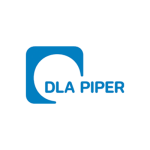With the approaching end of the Dutch government’s term, consultations were released on March 4 2021 addressing two legislative proposals against tax avoidance structures. These proposals are in particular relevant for multinational enterprises.
The first consultation addresses the legislative proposal to eliminate double taxation through transfer pricing (TP). The second consultation addresses the further implementation of Dutch taxation rules for reverse hybrid entities. As part of the Netherlands’ implementation of the EU Anti-Tax Avoidance Directive (ATAD) 2 measures, reverse hybrid entities become subject to Dutch corporate income tax (CIT) as per January 1 2022. However, further implementation measures in the Dutch CIT Act, Dividend Withholding Tax (DWT) Act and Conditional Withholding Tax (CWT) Act will be made.
Elimination double non-taxation through transfer pricing
Background
The Netherlands’ codification of the OECD arm’s-length principle is laid down in Article 8b CIT Act and provides that the pricing of transactions between related parties should be at arm’s-length, meaning that parties must handle if they are independent parties. In case the pricing of transactions is not at arm’s-length, an upward or downward profit adjustment must be made for Dutch tax purposes.
Generally, in case of a downward profit adjustment, the Dutch taxpayer reports the difference between the profits for accounting purposes and arm’s-length profit, as informal capital contribution. This approach is confirmed by the Dutch Supreme Court in 1978 in the infamous Swedish Grandmother case.
For such downward adjustment, Dutch tax law currently does not require any corresponding taxable upward adjustment at the level of the Dutch entity’s related party. Therefore, a double non-taxation may arise in the situation that for example the Dutch taxpayer receives an interest-free loan from a related party. In such case, the Dutch taxpayer imputes the arm’s-length interest rate as deductible interest expenses, while the jurisdiction of the related party may not impute taxable interest income. Another scenario may arise where the Dutch taxpayer acquires an asset from a related entity at book value while the arm’s-length price should be higher. In such case, the fiscal cost price of the asset will be adjusted upwards to the arm’s-length price and this price will be used as amortisation basis.
Legislative proposal
The legislative proposal introduces measures aiming to eliminate double non-taxation under the Dutch arm’s-length principle. These measures can be divided into three items.
The measures are focusing on downward adjustments by the Dutch taxpayer which are defined as the reduction of the taxable profit by imputing a higher amount of expenses or lower amount of revenue.
The first measure provides that a downward adjustment of the Dutch taxpayer’s taxable result cannot be applied, if the Dutch taxpayer cannot make plausible that a corresponding taxable upward adjustment is made at the level of the related party.
The second measure provides that if the Dutch taxpayer acquires an asset from a related party and the arm’s-length price exceeds the commercial price agreed between the Dutch taxpayer and related party, contrary to the Dutch arm’s-length principle, no step up will be provided for the arm’s-length price, if the Dutch taxpayer cannot make plausible that a corresponding taxable upward adjustment is reported at the level of the transferor.
The third measure provides that the depreciation of assets, that have been acquired by the Dutch taxpayer, will be limited insofar the asset is acquired from a related party within five financial years preceding the financial year starting on or after January 1 2022 and the Dutch taxpayer reported a step up in basis while no corresponding taxable upward adjustment was made at the level of the transferor. In such case, the depreciation expenses will be limited to the lowest amount of (a) the value of the asset if the adjustment of the fiscal cost price was disregarded at the moment of the acquisition, or (b) the fiscal cost price of the asset immediately prior the first financial year starting on or after January 1 2022.
Implementing measures taxation of reverse hybrid entities
Background
As part of the Netherlands’ implementation of the ATAD 2 measures, hybrid mismatches are neutralised under the existing legislation. As per January 1 2022, the reverse hybrid rule becomes effective. This rule will tackle the hybrid mismatch at the source. Under the reverse hybrid rule, Dutch entities treated as transparent for Dutch tax purposes, but opaque from the perspective of its investors, will become subject to Dutch CIT. Therefore, the mismatch in tax qualification of the entity will be eliminated.
The most common example of a reverse hybrid entity was the so-called CV/BV structure.
As a result of the already effective ATAD 2 measures, hybrid mismatches as a result of payments to a reverse hybrid entity are generally already neutralised.
The proposed implementing measures include the tax treatment of reverse hybrid entities for DWT and CWT purposes. For DWT purposes, the tax treatment of reverse hybrid entities should be similar to the treatment of Dutch corporate entities. Therefore, distributions will be subject to DWT, but investors in the reverse hybrid entity may qualify for the full domestic DWT exemption.
Also for CWT purposes, the treatment of payments by a reverse hybrid entity should be the same as by Dutch corporate entities. Hence, payments by a reverse hybrid entity directly or indirectly to a related entity in a, by the Netherlands, defined blacklisted jurisdiction, might be subject to CWT.
Comments
The legislative proposal for eliminating double taxation through TP is in itself not a surprise as it was one of the Dutch Advisory Committee on taxation of multinationals’ recommendations, as published in 2020. Nevertheless, the proposal results in a deviation from the arm’s-length principle while due to the tax transparency rules other jurisdictions should be more aware of such adjustments under Dutch tax law.
For Dutch taxpayers reporting a downward TP adjustment in their corporate tax return, whether this are higher expenses, including depreciation costs, or lower income, should carefully review the impact of this proposal for their Dutch tax position. Secondly, in case assets have been transferred to the Netherlands since 2017, it should be reviewed whether future depreciation costs are affected by this proposal. If this is the case, transfer of assets might be considered.
The implementing measures for reverse hybrid entities were already announced as part of the ATAD 2 legislative procedure. The proposed measures might have an impact on multinational structures in which ATAD 2 measures neutralising hybrid mismatches apply given these mismatches can be eliminated under the reverse hybrid entity rule. Therefore, it is important to monitor the impact of the measures for structures with a Dutch reverse hybrid entity.
Jian-Cheng Ku
Partner, DLA Piper
Tim Mulder
Senior associate, DLA Piper













